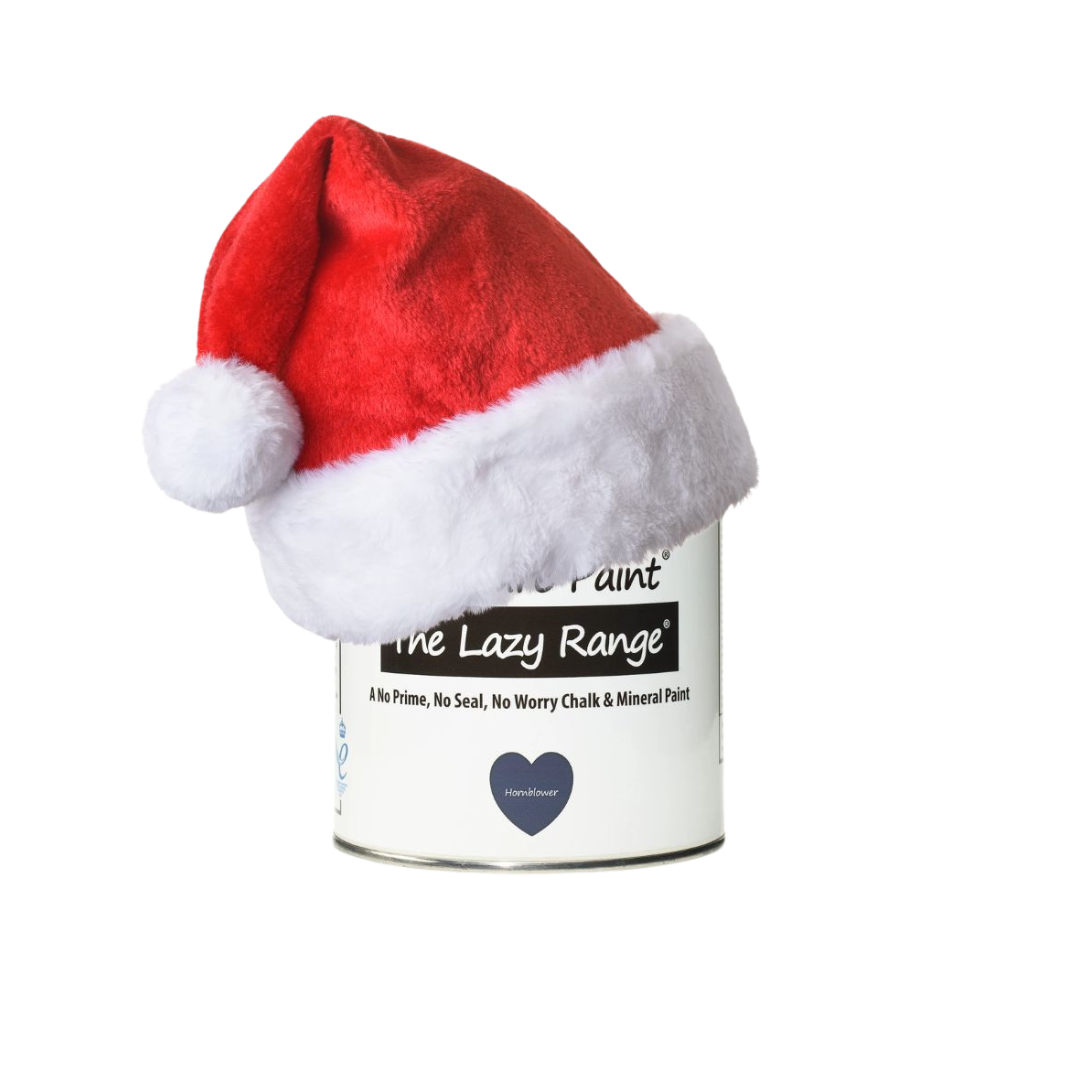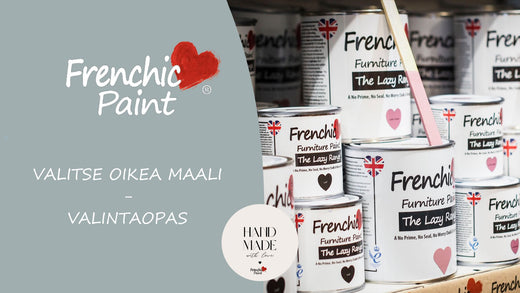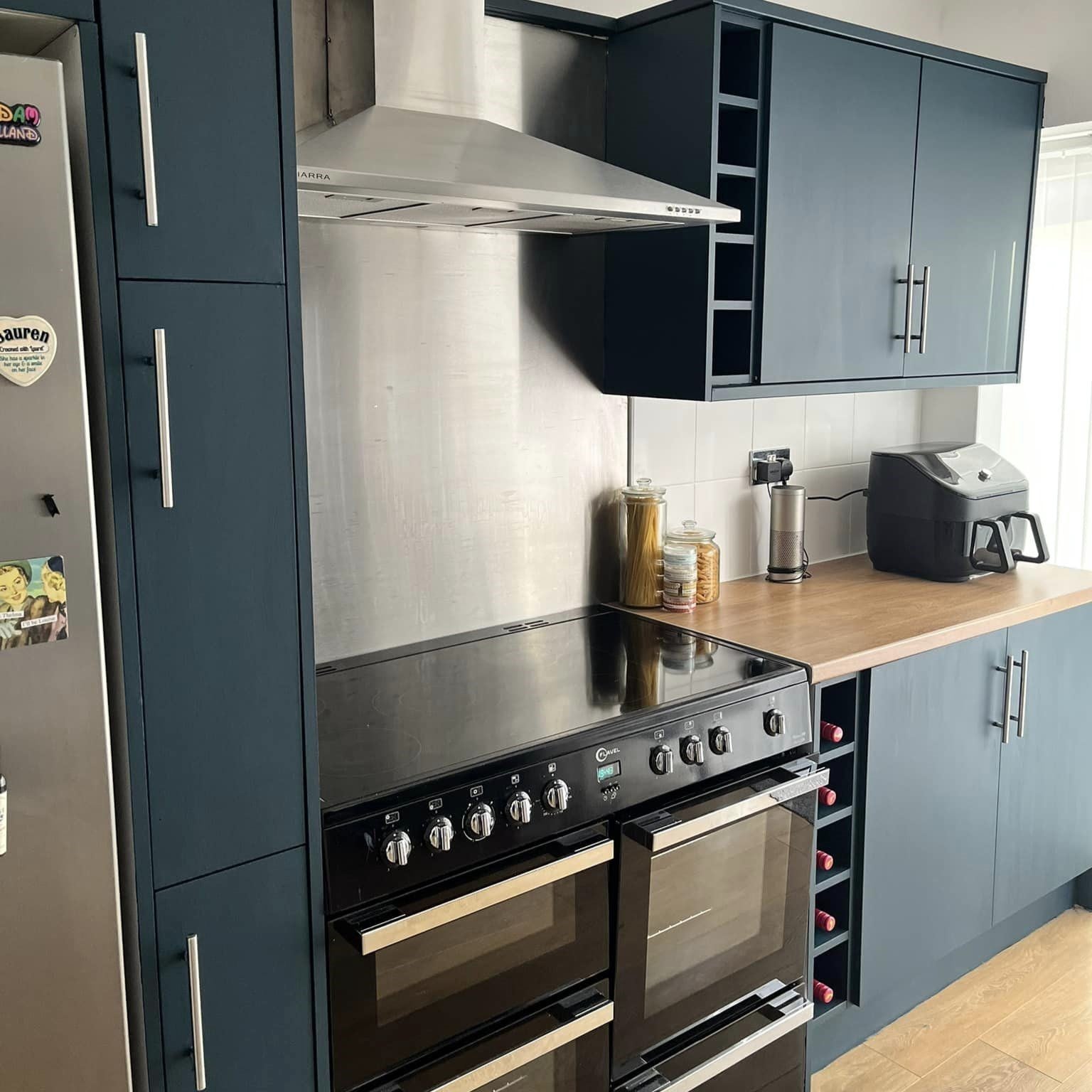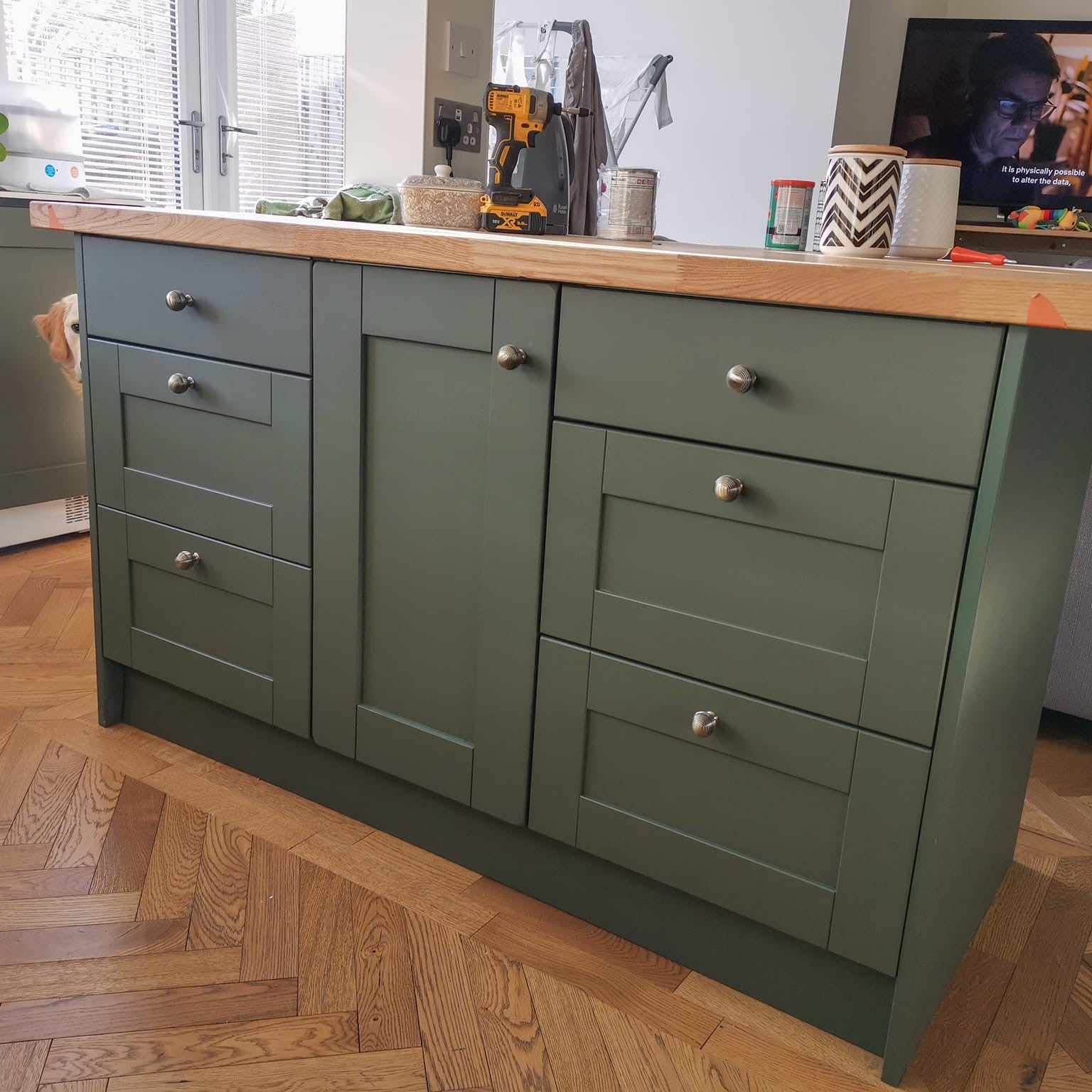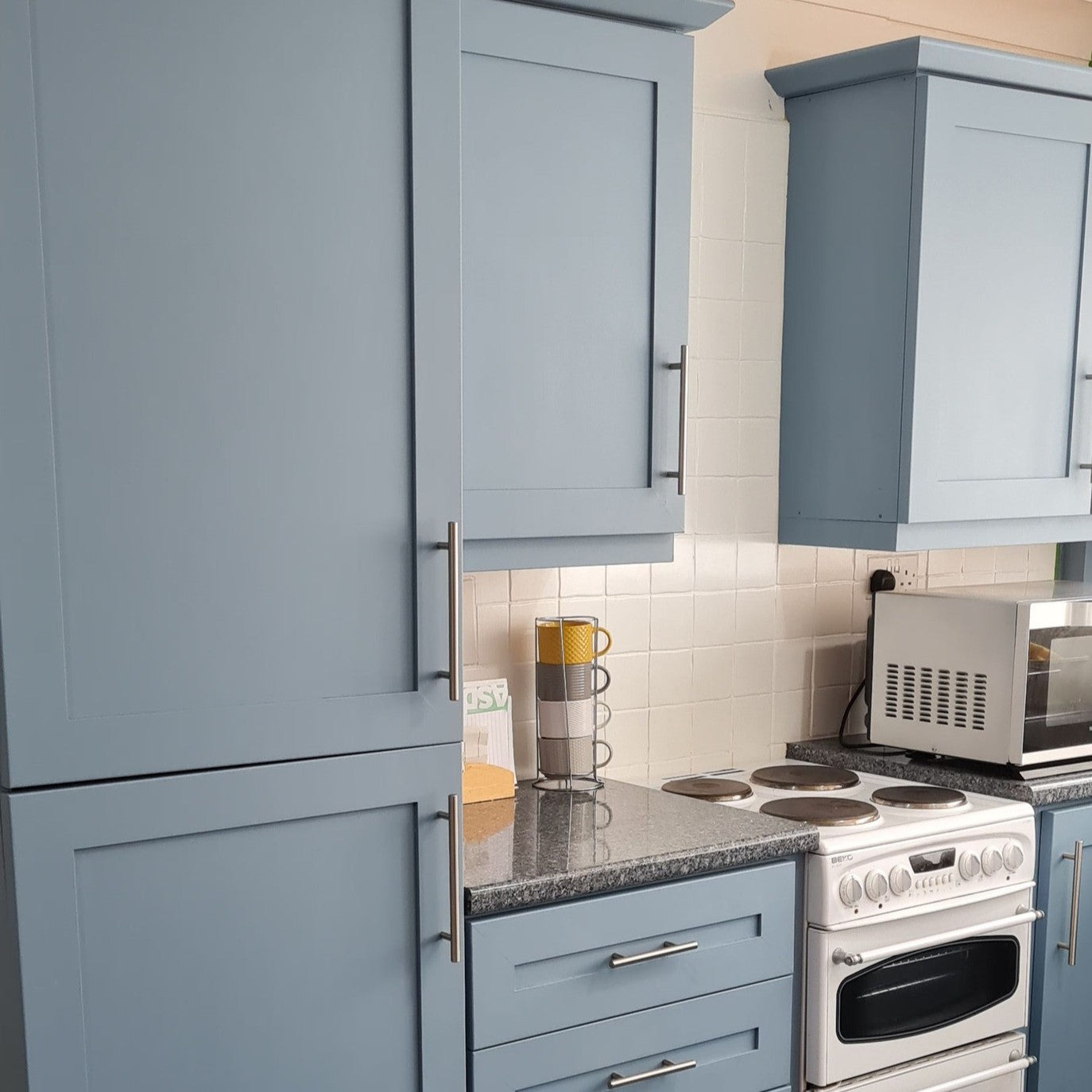Summer - It’s a wrap! Shall we talk a bit about the weather?
The outdoor painting season has now ended, so it's time to bring paints, supplies, and painting projects indoors and remind our customers about proper paint storage.
Now is a good time to bring paints from the cottage, garden sheds, and garages into warmth.
Frozen or frost-damaged water-based paint cannot be revived, and painting with it negatively affects durability and surface smoothness.

Also remember that paint must not be left in a cold car overnight, or on the back seat during a shopping trip on a freezing day. Water-based Frenchic paint is sensitive to freezing and frost damage.
These instructions and tips are also worth reading in early spring when painting projects are waiting to start after a long winter.

An outdoor painting project when the air is cool and humid is not always a good idea
Even if it is sunny during the day, at night it is cold and heavy dew rises onto the freshly painted surfaces.
For the paint to cure (dry) effectively, the temperature must be at least 10 °C (also overnight) for at least 48 hours after painting.
Dewy and rainy conditions are also not a good option.
Instructions in brief
- Check the weather, and also look at the forecast for the next few days. Avoid extreme temperatures and humidity.
- Conditions matter: The painted surface must be dry, and the paint must have enough time to dry and cure.
- Avoid problems: Too hot, cold, or damp weather can ruin the result and reduce the paint's durability.
- Don't forget storage: Close the paint can carefully and store it protected from extreme temperatures. The best storage temperature is a steady +10 to +20 degrees.

Painting Weather and Conditions – When is the right time to paint?
Frequently Asked Questions:
Outdoor painting is generally best timed for warm weather – painting in cold or damp conditions is not recommended. But too hot weather can also cause problems! Here are the key points summarized:
- Check the weather for the time of painting and the following 48 hours.
- Avoid painting in extreme temperatures, direct sunlight, cold, or damp conditions. An open paint can easily forms a thick skin on the paint surface, and the edges of the paint can dry and flake into the can.
- So keep the lid on the paint can to prevent impurities from falling into the paint and store the paint can in the shade.
- Remember that depending on the season and location, outdoor painting is not always the best idea.
- Make sure the surface is dry
- The first and most important rule: the painting surface must be completely dry before applying paint.
- Wooden outdoor furniture and other porous materials can absorb moisture and require a long drying time after rain, winter, or washing preparation – sometimes even several days if the weather is unfavorable. This issue is especially pronounced in early spring and late autumn.
- Anticipate and move furniture indoors to dry well in advance.
Paint Drying and Initial Curing
All paints need time to dry and cure properly.
This is not only important for durability but also ensures a smooth and even finish.
Why? Because the moisture in the paint must evaporate efficiently for it to adhere to the surface and cure properly.
This requires the right conditions that support both paint drying and curing. Let’s dive deeper into these conditions...
What weather and conditions are OK for painting?
With these tips, you’ll ensure your painting project succeeds despite the weather!
Always remember to check the weather forecast and protect the paints properly. Painting can be fun – as long as the conditions are right.
Ensure the weather is favorable during painting and also for the next 48 hours – remember that temperatures can drop significantly at night!
Too hot weather?
If the air is too hot, the paint surface may dry too quickly. This can cause uneven texture and hinder the curing process, as the underlying paint dries more slowly.
Painting in direct sunlight and heat is practically impossible, as the paint dries quickly both on the brush and in the can.
Additionally, heat can cause water in the paint can to evaporate too quickly, making the paint too thick rapidly.
This can cause the paint to thicken and make it harder to apply evenly – and possibly cause color variation.
Avoid evaporation in the can by transferring the needed amount of paint to a clean container (remember to stir well first!) and close the can tightly. Do not leave the can or container in the sun!
The target temperature for painting and the following 48 hours is between +10°C and +32°C.
Too cold weather?
Painting in the cold can also be challenging. Some paints may thicken in the cold, making them harder to apply.
Additionally, cold slows drying, which can affect the durability of the finish and cause white "blooming" on the surface.
Extremely cold weather can even freeze water-based paints, making them unusable. Do not try to revive frozen or frost-damaged paint by thinning or mixing – if the texture is grainy, do not use the paint.
Make sure the temperature is at least 10°C during painting and for the first 48 hours (remember that temperatures can drop at night!).
Too humid or damp weather?
Moisture slows down paint drying. Humid air prevents moisture from evaporating from the paint and slows curing. This applies at all temperatures. In summer, paint indoors in a well-ventilated space.
Just like in the cold, paint drying slows down in humid conditions. This can prevent the paint from curing properly and cause a white haze on the surface.
A sudden rain shower can ruin a freshly painted surface.
What is the right season for painting?
Considering all the above factors, certain seasons may not necessarily be the best time for outdoor painting.
In Finland, exterior painting is recommended to be scheduled for dry early summer and warm early autumn months, when the weather is usually more favorable, but even then it is advisable to be prepared to move the painted furniture to shelter after painting to ensure even drying.

A small reminder about storage
Storage conditions of the paint also matter:
- When you pick up paint, please do not leave the paint can in a cold car on a freezing day during your shopping trip. Water-based paint freezes easily and frozen paint cannot be revived.
- Close used cans carefully after use to prevent water evaporation from the paint. (paint thickens).
- Protect paints from moisture, cold, and heat during storage. The best place is a space with stable temperature and dry conditions.
- Do not store paint in an outdoor shed or garage during winter; now is the time to save the paints in a warm place.
- When you reuse paints after long storage, stir the paint vigorously and thoroughly from the bottom of the cans first.
If the paint's consistency seems smooth and correct after thorough mixing, and the paint does not smell bad, you can try applying it on a test piece. If everything is fine and the color looks right, you can continue painting.
Otherwise, we do not recommend painting with, for example, paint that has a grainy texture and an unpleasant smell. Such paint is spoiled.
Spoiled paint affects both the color shade and the durability of the surface as well as the beautiful finish & spreadability.
With these tips, you ensure that your painting project succeeds even in unpredictable weather!
So remember to check the weather forecast and protect and close the paints properly.
You can read more painting tips for exterior painting here.
From here you can read about painting an exterior door.
Painting can be fun – as long as the conditions are right!

